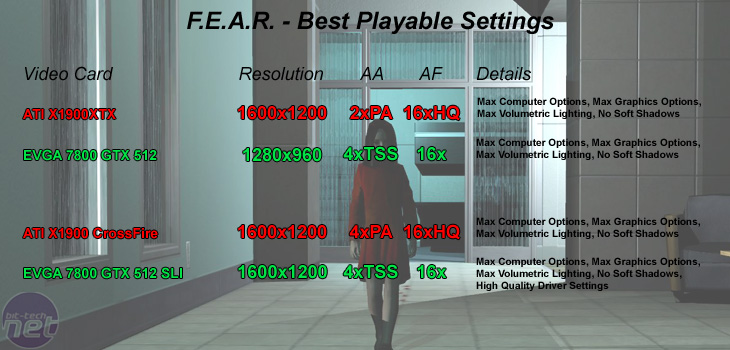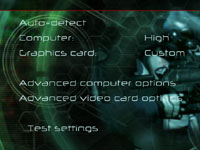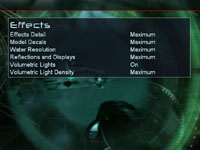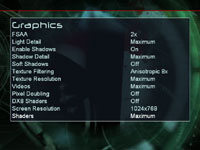F.E.A.R.
Publisher: VU GamesWe used the full retail version of F.E.A.R. patched to version 1.02. The game makes use of a lot of effects - including soft shadows, volumetric lighting, parallax mapping and particle effects, along with a slow-motion mode that really taxes today's top of the line GPU's. There's extensive use of high resolution textures. The walls are both bump mapped and parallax mapped to give a realistic feel to the brick walls that are a big feature of this title. Also, the world is incredibly destructible, which is made more realistic by parallax mapping.
In general, this is a graphically intense game and the most outstanding part of the graphics engine is undoubtedly the player character's shadow that is cast on the wall.
It also has the most advanced A.I. that we have ever seen in a game engine to date - there are times when you'll find yourself with your pants down around your ankles with no where to go. For anyone who hasn't bought this game yet, we highly recommend you do - check out our full review here.
We did a manual run-through from the "Heavy Resistance" level, between two save game checkpoints - it was a section of intense outdoor gameplay that lasted around three and a half minutes. We recorded frame over time graphs for all of our manual run-throughs because we found that the SloMo mode dropped our frame rates in to the low teens. We suspect this drop is part of Monolith's technique for slowing down the gameplay, as the game was not as jerky as the frame rate suggests.
Anti-Aliasing and Anisotropic Filtering were controlled from inside the game, and thus drivers were left set to "Application Controlled".
Below is a table of the best-playable settings that we found best for each video card configuration. We decided that a minimum frame rate of around 15 frames per second and an average of over 40 frames per second would deliver a good gaming experience throughout the rest of the title.


The EVGA GeForce 7800 GTX 512 was not able to play the game smoothly with antialiasing enabled at 1600x1200, so we settled for 4x transparency supersampled antialiasing at 1280x960. The game experience was very smooth, but wasn't as immersive as the experience delivered by the ATI Radeon X1900XTX at the higher resolution.
When we added another card into the fray, the Radeon X1900 CrossFire enabled us to increase the AA levels to 4x performance adaptive antialiasing. However, we found that we were unable to increase the adaptive antialiasing levels to the quality setting without suffering a large performance hit. We were still able to use high quality anisotropic filtering and the gameplay experience was quite frankly fantastic - the frame rate never dropped below 20 frames per second during our manual run through.
The EVGA GeForce 7800 GTX 512 configuration also performed very well in F.E.A.R. - the performance increases from adding the second card were more impressive. We were able to increase a full resolution setting and enable high quality driver settings to remove any texture filtering optimisations that might cause a drop in image quality while all other detail settings remained the same. Even without the resolution change, the image quality was higher than a single GTX 512.
On the whole though, the smoothness coupled with the impressive texture filtering quality on the Radeon X1900 CrossFire means that we would favour it over the EVGA GeForce 7800 GTX 512 solution.

MSI MPG Velox 100R Chassis Review
October 14 2021 | 15:04










Want to comment? Please log in.